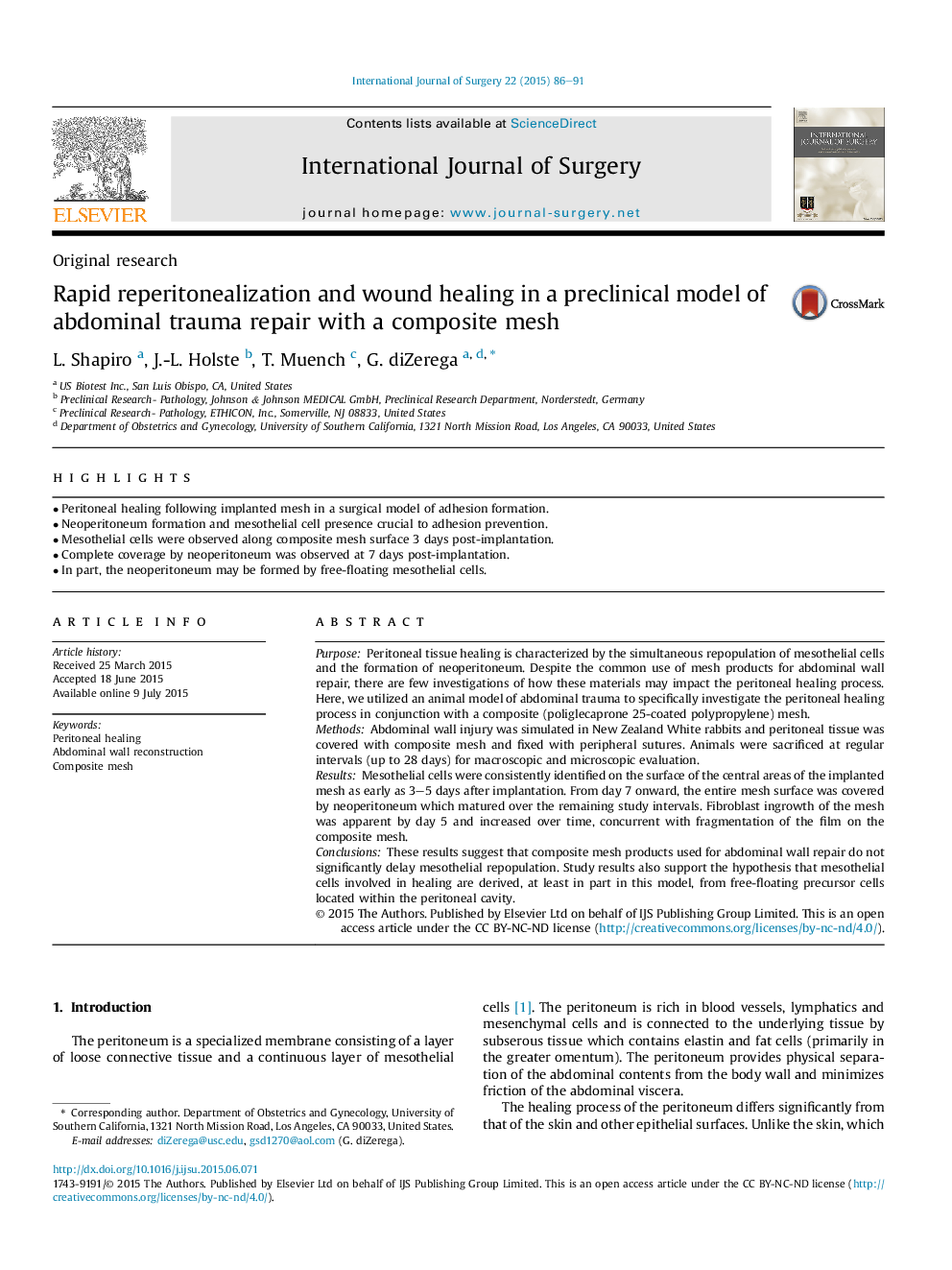| کد مقاله | کد نشریه | سال انتشار | مقاله انگلیسی | نسخه تمام متن |
|---|---|---|---|---|
| 6251398 | 1611970 | 2015 | 6 صفحه PDF | دانلود رایگان |
- Peritoneal healing following implanted mesh in a surgical model of adhesion formation.
- Neoperitoneum formation and mesothelial cell presence crucial to adhesion prevention.
- Mesothelial cells were observed along composite mesh surface 3 days post-implantation.
- Complete coverage by neoperitoneum was observed at 7 days post-implantation.
- In part, the neoperitoneum may be formed by free-floating mesothelial cells.
PurposePeritoneal tissue healing is characterized by the simultaneous repopulation of mesothelial cells and the formation of neoperitoneum. Despite the common use of mesh products for abdominal wall repair, there are few investigations of how these materials may impact the peritoneal healing process. Here, we utilized an animal model of abdominal trauma to specifically investigate the peritoneal healing process in conjunction with a composite (poliglecaprone 25-coated polypropylene) mesh.MethodsAbdominal wall injury was simulated in New Zealand White rabbits and peritoneal tissue was covered with composite mesh and fixed with peripheral sutures. Animals were sacrificed at regular intervals (up to 28 days) for macroscopic and microscopic evaluation.ResultsMesothelial cells were consistently identified on the surface of the central areas of the implanted mesh as early as 3-5 days after implantation. From day 7 onward, the entire mesh surface was covered by neoperitoneum which matured over the remaining study intervals. Fibroblast ingrowth of the mesh was apparent by day 5 and increased over time, concurrent with fragmentation of the film on the composite mesh.ConclusionsThese results suggest that composite mesh products used for abdominal wall repair do not significantly delay mesothelial repopulation. Study results also support the hypothesis that mesothelial cells involved in healing are derived, at least in part in this model, from free-floating precursor cells located within the peritoneal cavity.
Journal: International Journal of Surgery - Volume 22, October 2015, Pages 86-91
